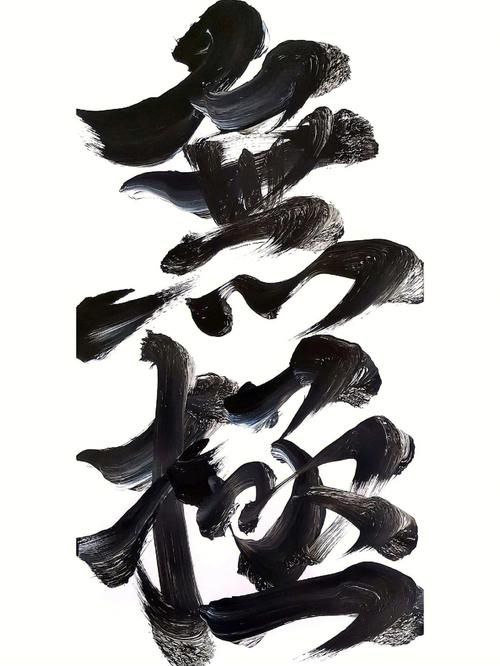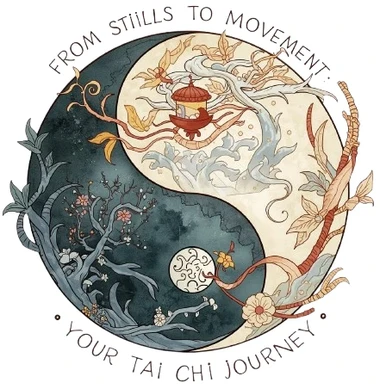The Overlooked Beginning
When most people think of Tai Chi, they picture flowing movements. Gentle arms sweeping through the air. Feet gliding like water. Breath syncing with motion. But what if the most powerful part of the practice happens before you even move an inch?
It’s a question I wish someone had asked me when I first started. I jumped straight into forms—eager to learn, eager to move. But something felt off. My balance was shaky. My mind scattered. My breath shallow. It wasn’t until I discovered the Wuji stance that everything began to shift.
So let’s pause together. Before the movement. Before the form. Let’s explore the stillness that gives Tai Chi its soul.
This guide will walk you through the essence of Wuji, the art of Zhan Zhuang—a foundational Tai Chi standing meditation.
You'll learn how to stand before Tai Chi with intention, and how to stand before Tai Chi with intention. Whether you're new or experienced, this practice can deepen your grounding, calm your mind, and unlock a whole new layer of awareness.
The Wuji-Taiji Continuum: An Ancient Framework for Modern Well-Being

What Is Wuji? The Stillness Before Tai Chi's Movement
Stillness Before Creation
Wuji (无极) is a concept from ancient Chinese philosophy. It means “without polarity”—the state before yin and yang, before movement, before form. It’s primordial stillness. Infinite potential. The quiet before the first breath.
In Tai Chi, Wuji isn’t just an idea. It’s a feeling. A stance. A way of being.
Imagine standing like a tree. Your feet rooted deep into the earth. Your spine gently suspended from the crown of your head. Your breath soft, your thoughts quiet. You’re not doing anything. But everything is happening.
This is Wuji.
It’s the starting point of every Tai Chi form. The moment where stillness gives birth to motion.
The relationship between Wuji and Taiji isn’t a competition—it’s a dance of stillness and movement.
Wuji is the silence. Taiji is the song.
Exclusive Tip: When you stand in Wuji, don’t try to feel “energy.” Just notice your weight. Your breath. The contact between your feet and the ground. That’s where the magic begins.
4 Reasons the Wuji Stance Is Your Tai Chi Superpower
Rooting, Relaxation, and Readiness
Let’s be honest. Standing still sounds boring. But Zhan Zhuang (standing meditation) is active stillness.
A quiet power. Here’s why learninghow to stand before Tai Chiis a game-changer:
Here’s what it gives you:
- Rooting in Tai Chi: You learn to feel grounded. Like your body is plugged into the earth. This improves balance and prevents injury.
- How to relax for Tai Chi: Wuji helps release tension—especially in the shoulders, neck, and lower back. You stop holding. You start sinking.
- Benefits of standing meditation: Your mind slows down. Your breath deepens. Your awareness sharpens. It’s like rebooting your nervous system.
- Tai Chi for grounding: Before you move, you settle. You become present. You stop chasing perfection and start feeling connection.
Think of Wuji as the soil. Without it, your Tai Chi movements are just leaves blowing in the wind. With it, they grow from deep roots.
Exclusive Tip: Try standing in Wuji for 3 minutes before your next form. Don’t rush. Don’t fidget. Just be. You’ll notice your movements feel more fluid, more connected.

How to Stand Before Tai Chi: A Step-by-Step Guide
Zhan Zhuang Made Simple
Zhan Zhuang (站桩) means “standing like a post.” It’s a form of standing meditation used in both Tai Chi and Qi Gong. And Wuji is its foundation.
Here’s how to begin:
- Step 1: Prepare Stand with feet shoulder-width apart. Toes pointing forward. Knees soft. Spine tall.
- Step 2: Align Imagine your tailbone gently sinking. Your weight evenly distributed across your feet. Feel your body settle.
- Step 3: Relax Scan your body from head to toe. Let go of tension in your jaw, shoulders, elbows, belly. Don’t force it—just invite softness.
- Step 4: Breathe Let your breath be natural. Inhale gently through your nose. Exhale slowly. Feel your body expand and settle with each breath.
- Step 5: Focus Place your attention on your lower belly (Dantian) or the soles of your feet. Let your mind rest there.
Practice Time Start with 1–3 minutes. Build up to 5–10 minutes. Some days will feel easy. Others won’t. That’s okay.
Exclusive Tip: Visualize your feet melting into the ground like popsicles in warm water. It’s a playful image—but it helps you feel rooted.
Common Challenges and How to Overcome Them
“I Feel Bored or Distracted”
Totally normal. Your mind is used to stimulation. When it’s quiet, it panics. Just notice the thoughts. Then gently return to your breath or body.
“My Legs Hurt”
This is common when first exploring the benefits of standing meditation; your body is adapting. Check your posture. Are your knees bent too much? Are you tensing your thighs? Wuji should feel soft, not strained. Adjust and shorten your practice time if needed.
“I Don’t Feel Anything Special”
Perfect. You’re not supposed to chase sensations. Just feel your weight. Your breath. Your contact with the earth. That’s enough.
Exclusive Tip: Keep a journal. After each Wuji practice, write one sentence: “Today I felt…” Over time, you’ll see patterns. Progress. Insight.
Integrating Wuji Into Your Tai Chi Practice
Stillness Before Motion
Wuji isn’t just a warm-up. It’s the doorway. The transition from everyday life into mindful movement.
Before you begin your Tai Chi form, pause. Stand in Wuji for 1–2 minutes. Let your breath settle. Let your thoughts soften. Then, let the first movement arise—not from habit, but from awareness.
This changes everything.
Your form becomes more than choreography. It becomes a conversation between stillness and motion. Between earth and sky. Between you and something deeper.
Exclusive Tip: Try ending your Tai Chi practice with Wuji too. Stand quietly. Let the energy settle. It’s like sealing the practice with silence.
Conclusion: Stillness Is Your Superpower
We live in a world that celebrates movement. Hustle. Action. Speed. But Tai Chi teaches us something radical: stillness is strength.
The Wuji stance may look simple. But it holds the key to balance, relaxation, and inner calm. It’s the pause that powers the practice. The silence that shapes the song.
So next time you step into your Tai Chi routine, don’t skip the stillness. Stand. Breathe. Feel. Let Wuji guide you.
And if someone tells you standing still isn’t “real exercise,” smile gently. They haven’t felt the earth hum beneath their feet. Yet.
Ready to go deeper? In our ‘Foundations of Stillness’ module inside the Taichi Academy, we break down the Wuji stance and other core practices with slow-motion video and personalized tips.
We’ll guide you through Wuji and other core practices with detailed video instruction.
Prefer something quick and free? Sign up for our 5-minute grounding meditation—an audio guide to help you experience Wuji right now.
Your journey begins before the first step. Let stillness lead the way.
FAQ: Wuji, Zhan Zhuang, and Standing Still with Purpose
What is Wuji in Tai Chi, and why does it matter?
Wuji in Tai Chi refers to the state of stillness before movement begins. It’s the quiet moment where your body, breath, and mind align. Practicing the Wuji stance helps you feel grounded, relaxed, and ready—like pressing “reset” before the form starts.
How do I stand before Tai Chi practice correctly?
Start with feet shoulder-width apart, knees soft, spine tall. Let your breath settle. This is how to stand before Tai Chi—calm, centered, and aware. It’s not just posture; it’s preparation.
What’s the difference between Wuji and Taiji?
Wuji is stillness. Taiji is movement. Wuji is the pause before the first gesture—the space where intention gathers. In practice, Wuji vs Taiji isn’t a choice, but a sequence. Stillness gives birth to motion.
What are the benefits of standing meditation like Zhan Zhuang?
Zhan Zhuang, or standing meditation, improves posture, calms the nervous system, and builds internal awareness. It’s a powerful way to relax for Tai Chi and develop deep body-mind connection.
How long should beginners practice Wuji or Zhan Zhuang?
Start with 2–3 minutes. Gradually build up to 10. Even short sessions help with rooting in Tai Chi and calming the mind. The key is consistency, not duration.
